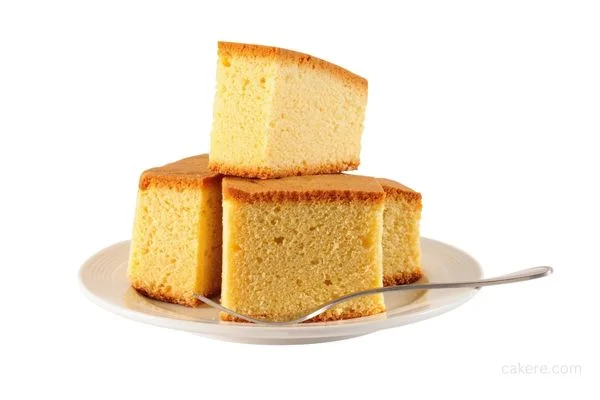Sponge cake is a light, fluffy, and airy cake that has a rich history dating back centuries. It has become a beloved dessert in many cultures around the world.

Origins of Sponge Cake
Sponge cake has its roots in ancient civilizations, where similar cakes were made using simple ingredients such as flour, eggs, and sweeteners. However, the term “sponge cake” itself emerged much later.
Early Examples of Sponge Cake
Early examples of sponge cake can be traced back to ancient Egypt and Greece. These early cakes were made by beating eggs with sugar and folding in flour. The resulting cake had a light and airy texture, similar to the sponge cakes we enjoy today.
Techniques and Ingredients
The ancient bakers used innovative techniques to achieve the desired texture of sponge cakes. One popular method involved separating the egg yolks and whites.
The yolks were beaten with sugar until pale and creamy, while the egg whites were whisked separately to create stiff peaks. The two mixtures were then combined, and flour was gently folded in to create a light batter.
Development of Sponge Cake in Europe
Sponge cake gained popularity in Europe during the Renaissance period. Bakers in Italy and France began experimenting with the basic recipe, adding their own twists and variations.
Influence of Renaissance Bakers
During the Renaissance, bakers in Italy and France refined the technique of making sponge cake. They introduced new ingredients such as butter and milk, which added richness and flavor to the cakes.
The bakers also started using molds to shape the cakes into various designs, making them visually appealing.
Introduction of Baking Powder
In the 18th century, the discovery of chemical leavening agents, such as baking powder, revolutionized the baking industry.
Baking powder helped create a more stable and consistent texture in sponge cakes, making them easier to prepare. This innovation allowed sponge cake to become more accessible to a wider audience.
Sponge Cake in the 18th and 19th Centuries
Sponge cake continued to evolve during the 18th and 19th centuries, with new variations and influences.
Queen Victoria’s Influence
Queen Victoria of England had a significant impact on the popularity of sponge cake. It is believed that she enjoyed a slice of sponge cake with her afternoon tea regularly, which led to the cake being commonly served during tea time in England.
This tradition spread to other parts of the British Empire and contributed to the cake’s worldwide recognition.
French and Italian Variations
During this period, French and Italian bakers developed their own variations of sponge cake. The French made the famous Génoise sponge cake, which is characterized by its light texture and buttery flavor. In Italy, the Pan di Spagna sponge cake became popular, known for its delicate and spongy texture.
Sponge Cake in the 20th Century
The 20th century witnessed the commercialization and industrialization of Sponge cake in the 20th century witnessed the commercialization and industrialization of baking processes, leading to further variations and adaptations of this beloved dessert.
Commercialization and Industrialization
With advancements in technology and the mass production of baked goods, sponge cake became more accessible to the general public.
Bakeries and confectioneries started producing sponge cakes on a larger scale, making them readily available in markets and stores. This increased availability contributed to the widespread popularity of sponge cake as a go-to dessert for various occasions.
Variations and Adaptations
As sponge cake gained popularity, different variations and adaptations began to emerge. Bakers experimented with flavors, fillings, and decorations, adding their own creative touches to the classic recipe.
Some popular variations include chocolate sponge cake, lemon sponge cake, and strawberry sponge cake. Additionally, sponge cake started being used as a base for elaborate layer cakes, such as the famous Victoria sponge cake.
Modern Sponge Cake
In the present day, sponge cake continues to be a favorite dessert enjoyed by people of all ages and cultures. It has become a versatile cake that can be customized to suit different preferences and dietary restrictions.
Popular Varieties
Various countries and regions have their own unique variations of sponge cake. For example, the Japanese have the famous fluffy and light Japanese sponge cake, often served with fresh fruit and whipped cream.
In Southeast Asia, pandan-flavored sponge cakes are highly popular, known for their vibrant green color and fragrant taste.
Sponge Cake in Different Cultures
Sponge cake has also been adopted and adapted by different cultures around the world. In some countries, it is an essential component of traditional desserts and pastries.
For instance, in Latin American cuisine, tres leches cake is a sponge cake soaked in a mixture of three types of milk and topped with whipped cream. In European cultures, sponge cake is often used as a base for layered desserts like trifle.
FAQs
No, sponge cake and pound cake are different. Sponge cake is light and airy, while pound cake is denser and richer due to the high proportion of butter and eggs.
Yes, there are eggless variations of sponge cake available that use substitutes like yogurt, applesauce, or mashed bananas.
To prevent a sponge cake from collapsing, make sure not to overmix the batter and avoid opening the oven door during baking.
Yes, sponge cake can be frozen. Ensure it is properly wrapped or stored in an airtight container to maintain its freshness.
Sponge cake can be served on its own, dusted with powdered sugar, or accompanied by fresh fruits, whipped cream, or a drizzle of chocolate sauce for added indulgence.
Conclusion
The history of sponge cake is a testament to the enduring appeal of this delightful dessert. From its humble beginnings in ancient civilizations to its widespread popularity in modern times, sponge cake has evolved and adapted, bringing joy to countless individuals.
